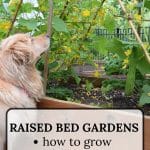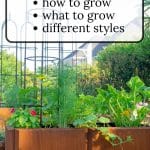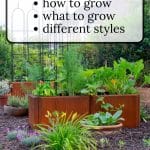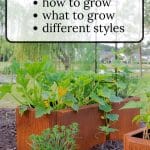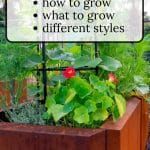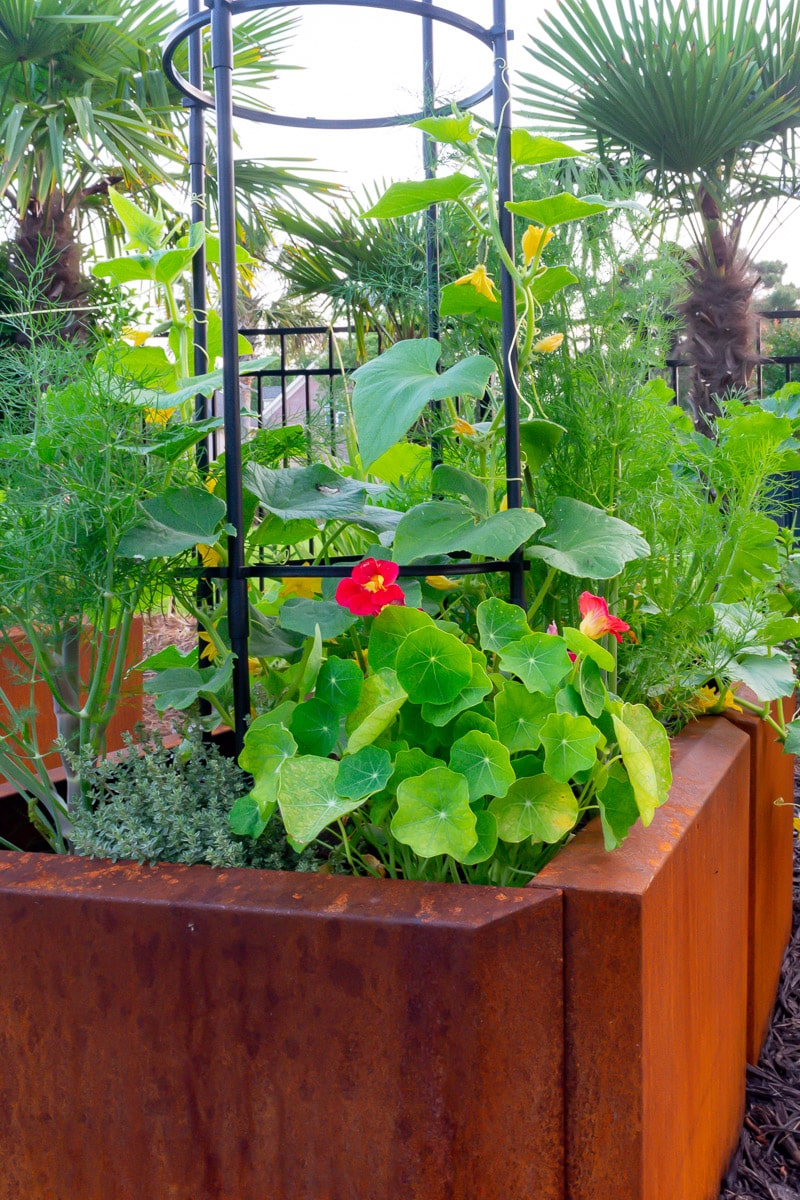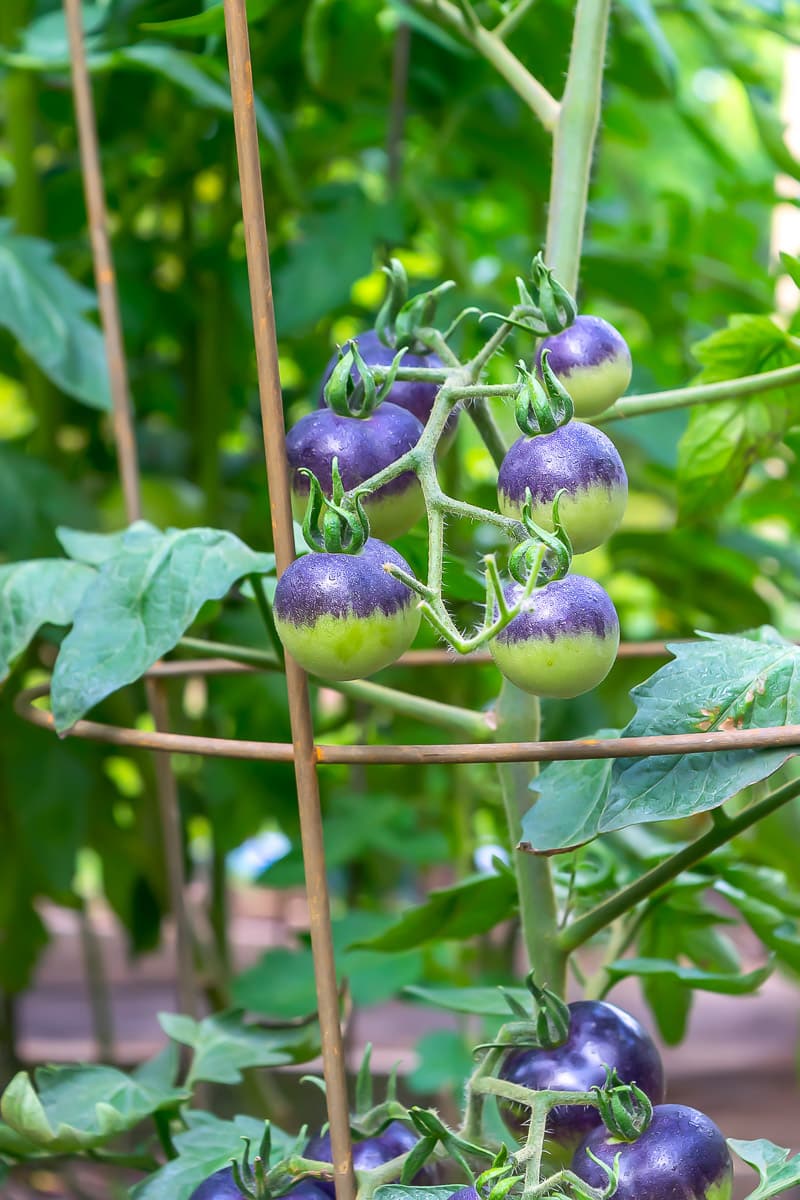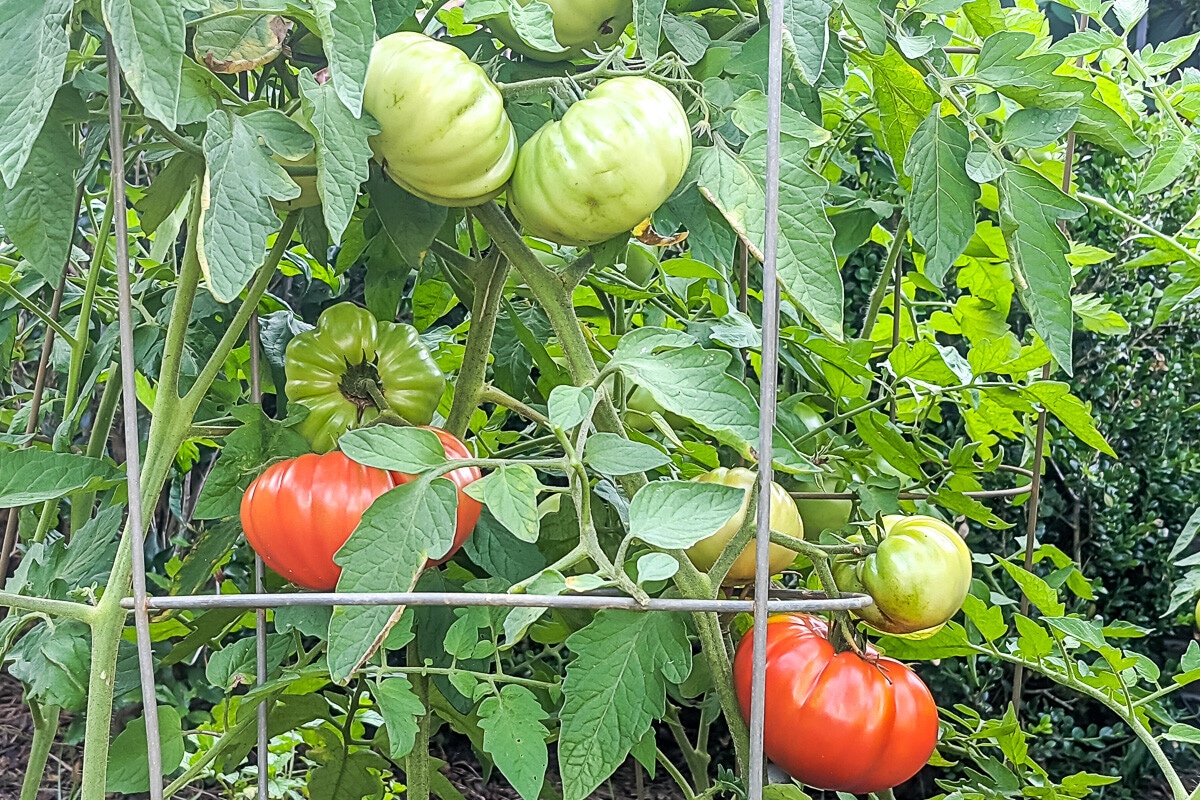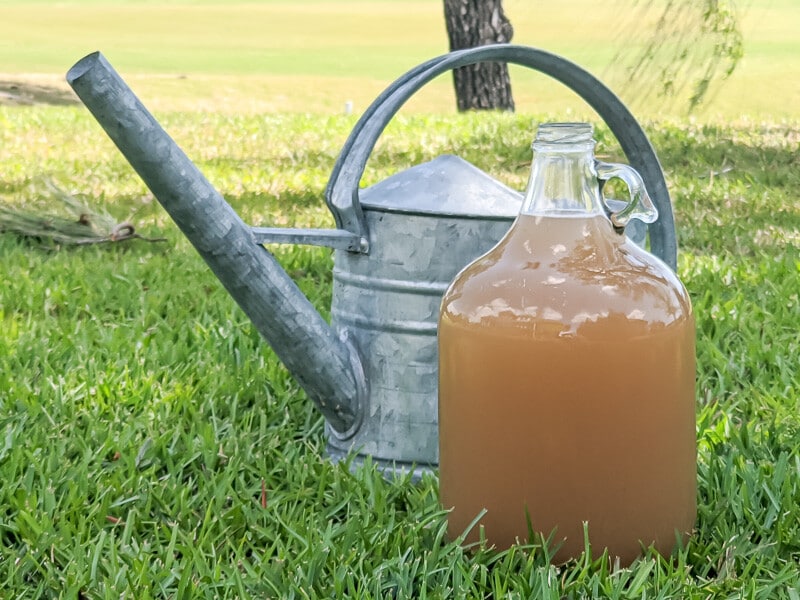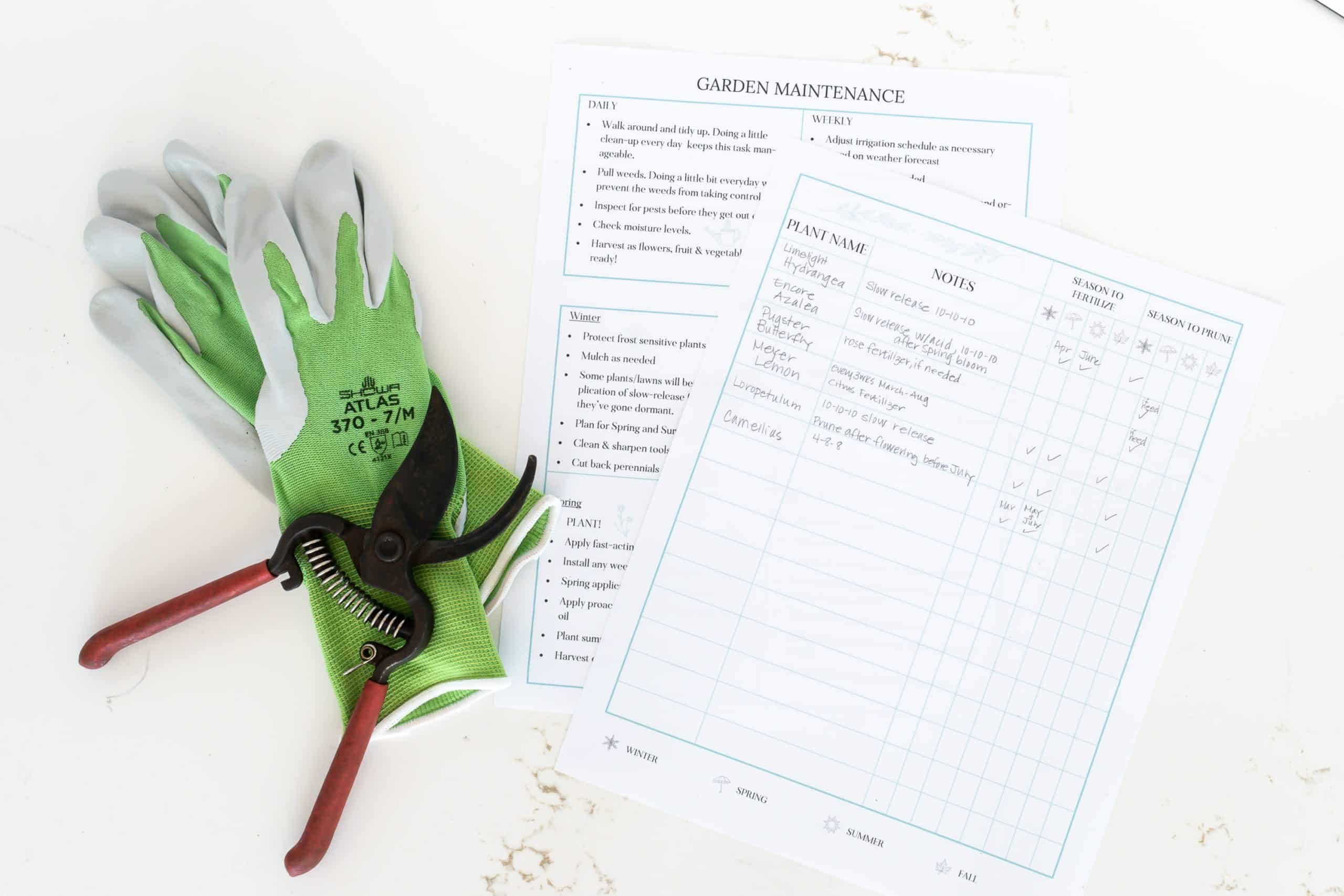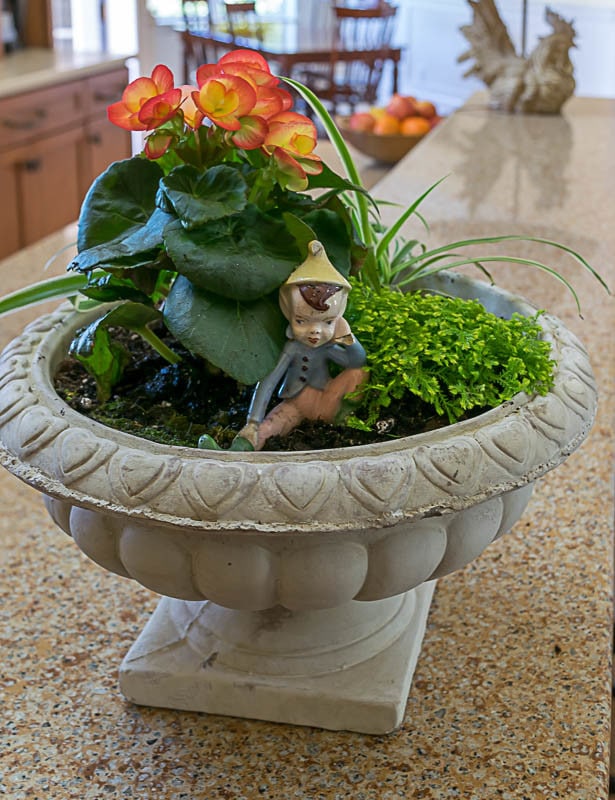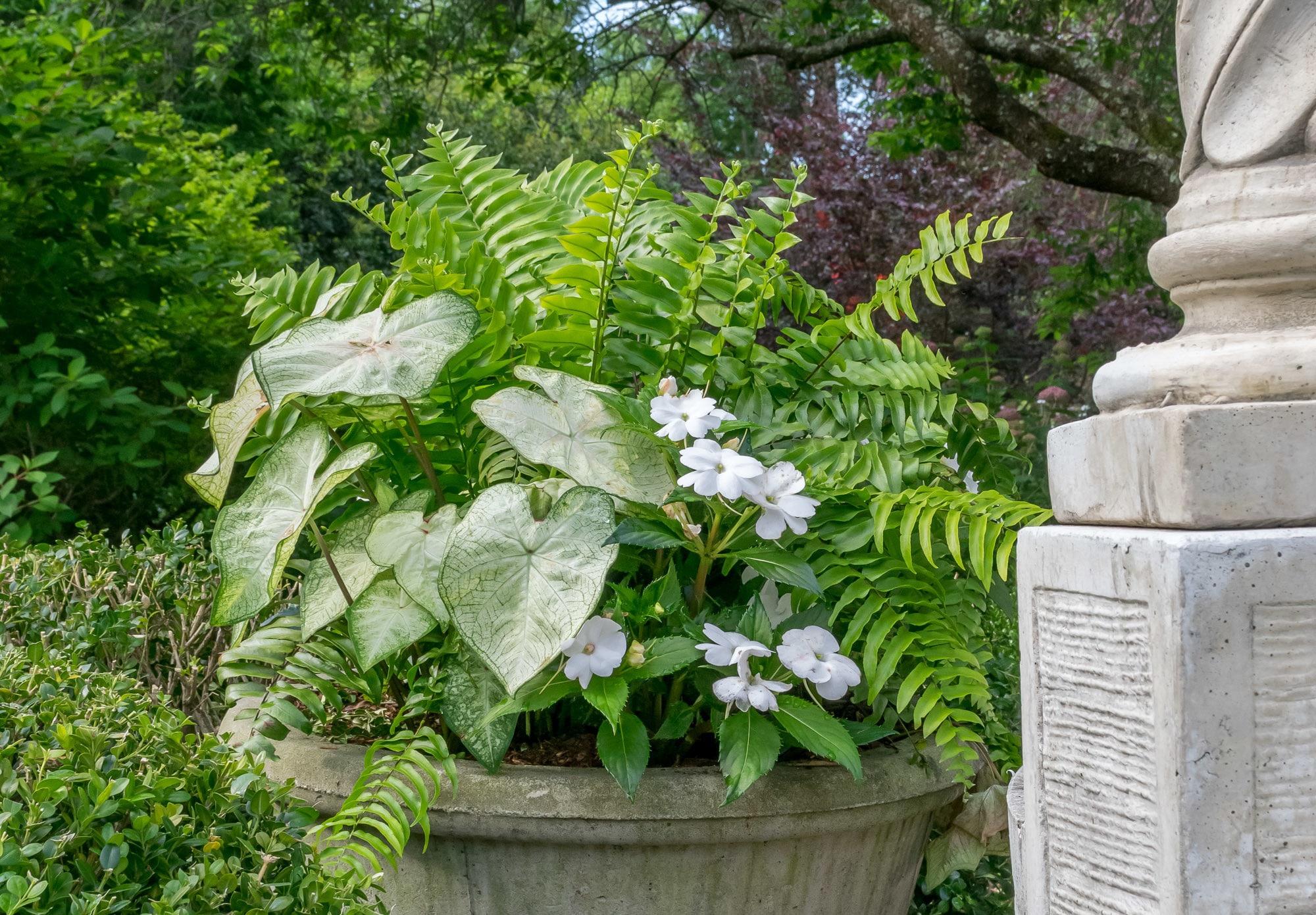Vegetables for Raised Bed Gardens
Raised garden beds are a great option for raising vegetables, providing an optimal environment for growth. Among other benefits, raised beds allow for easy access and management and the ease of soil enrichment. So, let’s dive into the advantages and disadvantages of raised bed vegetable gardening, the best vegetables for raised bed gardens, what vegetables to grow each season in your raised beds and different types of raised garden beds.
Raised beds enable gardeners to create an environment that directly caters to the needs of their plants. A raised bed enables warmer soil temperatures, facilitating an earlier growing season. It also promotes better-draining soil, which prevents root rot and other complications linked to overwatering.
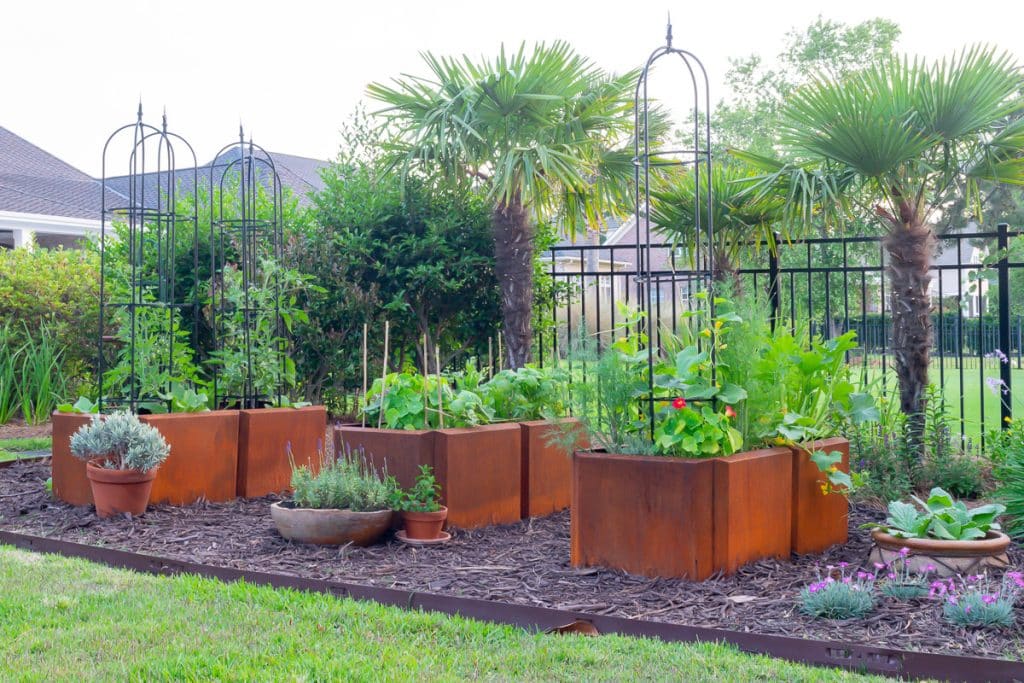
Table of Contents
Some of these links may be Amazon affiliate links and I may earn a small commission from the sale of these products to help defray the costs of operating this site, but the price you are charged is not affected. You can see my full disclosure policy here.
(I’ve been asked multiple times about those ‘obelisk/tomato cages’ in the garden. We needed something narrower and wanted something a bit more aesthetic than traditional tomato cages, and these fit the bill. We got them online at Walmart; here’s the link.)
Raised bed gardens offer many benefits and a few disadvantages to growing vegetables.
Advantages of Raised Garden Beds
One of the biggest advantages of raised bed gardening is the ability to create the perfect soil mix. This can be particularly beneficial if your garden soil is poor or contains clay, sand, or rocks. Raised beds also provide good drainage and air circulation, keeping plant roots healthy. The advantages of raised garden beds include the following:
Improved Soil Conditions
Raised beds allow you to control the soil within them. You can fill your beds with a blend of soil and compost that’s rich in nutrients and perfect for plant growth. The loose, well-draining soil also promotes healthy root growth. By avoiding traffic in the raised bed, the soil is not compacted, resulting in better air and water flow.
Ease of Maintenance
Weeds are typically reduced, and weeding is generally easier in raised beds because you can spot the weeds quickly, and the loose soil makes them easier to pull out. Weeds that are runners are unlikely to invade your raised beds. Plus, since you won’t be stepping on the soil, it doesn’t get compacted, making it easier to work with.
Better Pest Control
Raised beds can make it more difficult for pests like rabbits or slugs to reach your plants. They also allow using hardware cloth at the base to prevent burrowing pests like moles or gophers from accessing your garden.
Accessible Gardening
Raised beds bring the garden closer to you. This can be a significant advantage for those with mobility issues, back problems, disabilities, or old knees! It makes gardening more accessible as there’s less bending and kneeling involved.
Longer Growing Season
Because they’re above ground, raised beds warm up more quickly in the spring and stay warm longer into the fall. This extended growing season means you can often plant earlier and harvest later.
Improved Yield
Thanks to better soil conditions and a longer growing season, raised beds can yield more produce than traditional gardens in the same space. As a raised garden bed is elevated above the ground, there will be fewer issues with nematodes, microscopic worms that wreak havoc on a plant’s roots and reduce yields.
Space Efficiency
Raised beds are a great solution for making the most of a small space. They can be built in various shapes and sizes to fit your space.
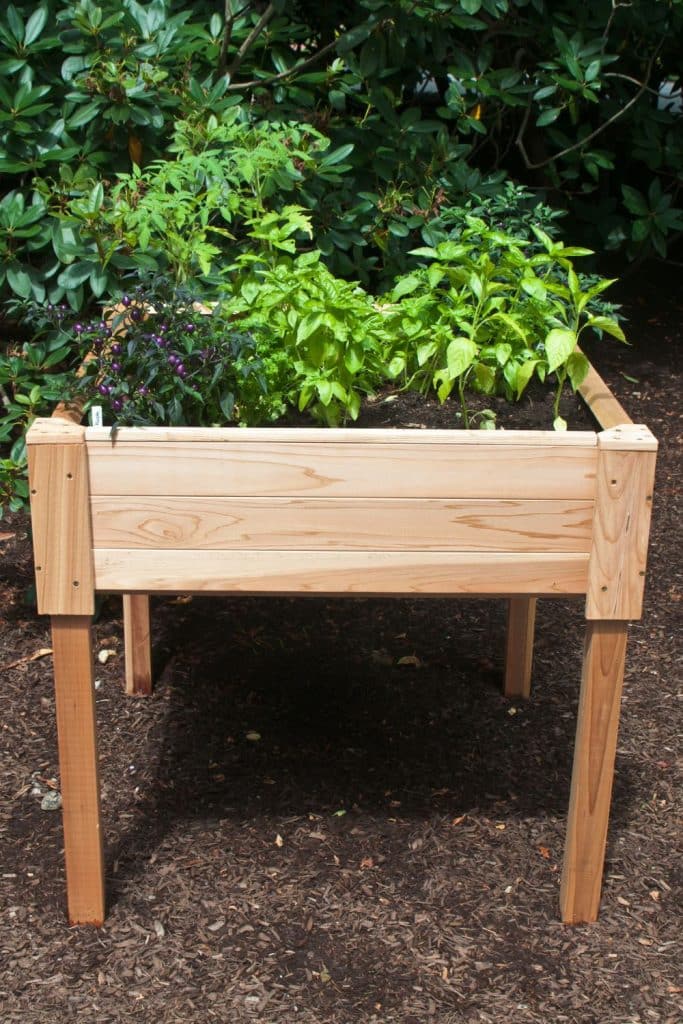
Prevent Soil Erosion
For gardens on a slope, raised beds can help prevent soil erosion caused by wind and rain.
Aesthetically Pleasing
Raised beds offer a neat and tidy solution to gardening. They can improve the look of your garden and be made from various materials to match your aesthetic.
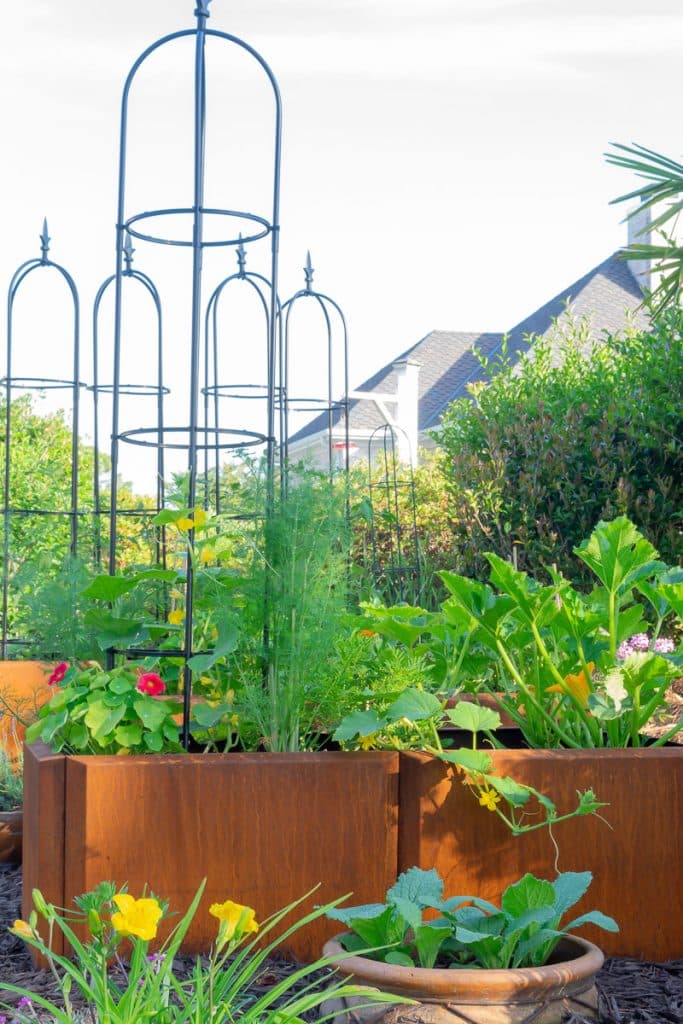
Considering these advantages, it’s easy to see why raised bed gardening is a popular choice for many vegetable growers, from novices to experts.
Disadvantages of Raised Garden Beds
While raised bed gardens offer many advantages, there are some downsides and challenges to consider:
Initial Setup Cost and Effort
Setting up a raised bed garden requires an initial investment of time and money. The cost of materials for the beds themselves, along with soil and compost to fill them, can add up. However, once set up, they can yield produce for years.
They occasionally need to be refilled with soil and compost, which can be a significant task depending on the bed size.
Watering Needs
Raised beds can dry out more quickly than in-ground gardens, especially in hot, dry climates. This means they may require more frequent watering, which could be challenging if you’re dealing with water restrictions or trying to conserve water.
Soil Compaction
Over time, soil in raised beds can become compacted and lose nutrients, requiring gardeners to replenish with compost or other organic matter periodically. In addition, if not properly constructed or maintained, the sides of raised beds can deteriorate, leading to soil erosion.
Limited Growing Space
Although one of the benefits of raised beds is the ability to grow more in a smaller space due to improved soil and growing conditions, the size of the beds still limits the amount of produce you can grow, especially if you have a small yard.
Microclimate Differences
Raised beds warm up more quickly in the spring, which can be a benefit but can also lead to plants bolting or becoming stressed if temperatures fluctuate significantly. The microclimate within a raised bed can also vary from the surrounding garden, affecting plant growth and health. You can mitigate soil temperature changes with a good layer of mulch.
Pest and Disease Vulnerability
If a disease does strike in your garden, it can spread quickly in the close quarters of a raised bed.
Despite these risks, many gardeners find that the benefits of raised bed gardening far outweigh the potential downsides. With careful planning and management, raised beds can lead to productive, healthy, and enjoyable gardening.
Attract Beneficial Insects to Your Garden
Attracting beneficial insects to your garden is a natural, organic way to help control damaging insects and pests. Learn everything you need to know to Attract Beneficial Insects to your Garden.
Tips for Growing Vegetables in Raised Bed Gardens
Gardening in raised beds is an easy and efficient way to grow various plants, but it requires some know-how.
The soil you chose is important. A mixture of compost, peat moss, and vermiculite is often recommended for raised bed gardening. This blend is lightweight yet nutrient-dense, providing the perfect medium for growing plants. Never step or lean on the soil in the raised bed. It compacts the soil, making it harder for plant roots to grow. Instead, narrow your raised beds so you can reach the middle from either side.
The soil in a raised bed tends to warm up faster in the spring than in ground-level gardens. This can benefit you, allowing you to plant earlier in the season. However, keep a watchful eye on soil moisture levels, as raised beds also tend to dry out faster. Regular watering is essential, but be careful not to overwater.
The secret to a productive raised bed vegetable garden is in the planting. Optimal spacing is critical. Many vegetables, such as tomatoes and bush beans, must be planted at least 18-24 inches apart to ensure healthy growth and air circulation. Leafy greens like Swiss chard can be spaced a bit closer, around 6-12 inches apart.
You can employ square-foot gardening methods in a raised bed to maximize your harvest. This planting technique involves dividing the garden into squares of one foot each and planting different crops in each square according to their size. For example, one square can hold one tomato plant or four Swiss chard plants.
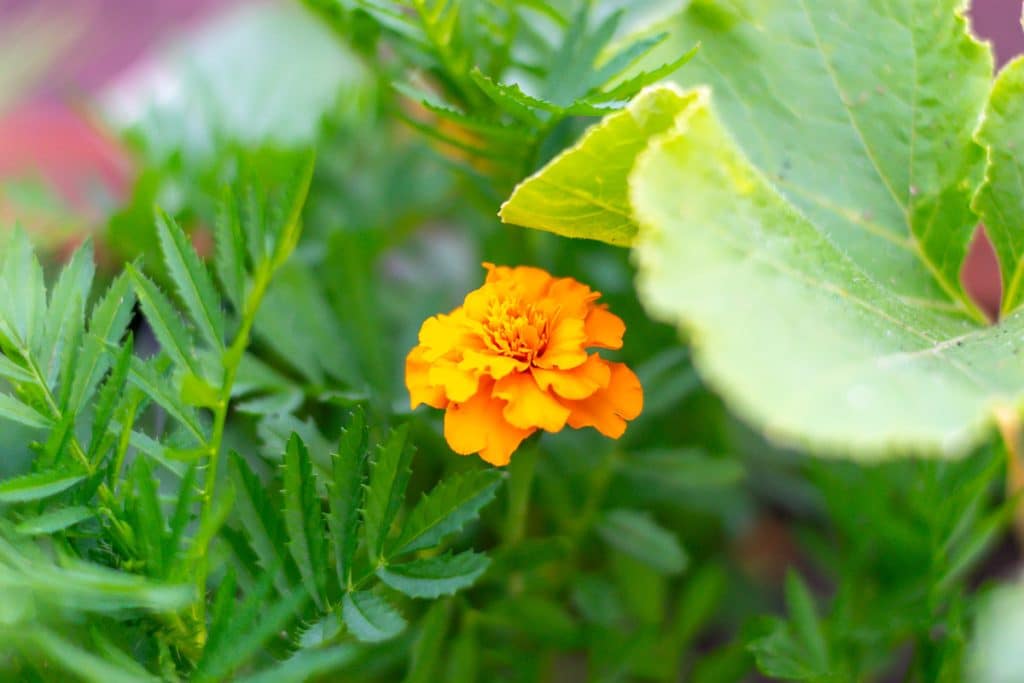
Refreshing your soil annually is critical when raising vegetables in a small space. Plan to amend with compost and manure annually. In fact, just work the healthy, green matter back into the soil so that it composts over the winter. This will replenish the nutrients that the previous season’s plants used up. We also fertilize with an organic fertilizer during the growing season, as needed.
Rotating your crops from season to season can prevent the buildup of pests and diseases that favor certain plants.
Selecting Vegetables for Raised Bed Gardens
Most vegetables work well in raised bed gardens.
Tomato plants, for instance, are an excellent choice. They require full sun and plenty of space for optimal growth, conditions easily met in a raised garden bed. A tomato plant’s sprawling vines appreciate the air circulation afforded by the raised bed, helping to keep diseases at bay.
Bush beans are another crop that thrives in raised beds. Sow the beans directly in the bed once the risk of the last frost date has passed. As the season progresses, they will provide a bountiful harvest.
Swiss chard, a vibrant leafy green, is a perfect addition to any bed garden. It prefers cooler growing seasons, so early spring or late fall is the ideal time for planting. Like bush beans, Swiss chard seeds should be sown directly into the soil of the raised bed.
Pole beans, another great choice, are best for gardeners with limited space. These plants grow upwards instead of spreading out, making them ideal for a raised bed. They need sturdy support, so ensure to provide a trellis or some kind of vertical assistance.
Raised bed gardens provide an excellent environment for a wide variety of plants. Here is a list of vegetables and herbs that typically do well in raised garden beds:
- Beets: These root vegetables appreciate the loose soil raised beds provide, allowing them to develop unimpeded.
- Bush Beans and Pole Beans do well in the warm soil of raised beds and can be spaced effectively.
- A cool-weather crop, cabbage grows well in the nutrient-rich soil of a raised bed.
- Carrots: The deep, loose soil in raised beds is perfect for growing long, straight carrots.
- Cucumbers appreciate the good drainage and increased air circulation provided by raised beds. Consider growing them on trellises such that they provide shade for more tender vegetables underneath.
- Eggplant, a warm-weather vegetable, benefits from the well-draining soil and warmer conditions of raised beds. Eggplants need plenty of space, so ensure they are appropriately spaced in your bed.
- Flowers as Companion Plants: Nasturtium, Calendula, Marigolds, and Borage are fantastic companion plants for most vegetables. Interplanting your vegetables with these flowers is beneficial and adds aesthetic appeal to your garden. Check out this post to learn more about Companion Gardening.
- Garlic: Garlic is planted in the fall and enjoys the well-drained conditions of a raised bed.
- Many herbs, including basil, parsley, cilantro, dill rosemary, thyme, and oregano, thrive in the conditions provided by raised bed gardens. Interplant your vegetables with herbs to maximize the space and take advantage of the benefits of companion planting. Keep mint in a separate pot so it doesn’t take over your raised bed.
- Kale: This hardy, nutritious leafy green grows well in the cooler temperatures of spring and fall and appreciates the nutrient-rich soil of raised beds.
- Leeks thrive in loose soil that drains well, making them a good match for raised beds.
- Lettuce: Plant in spring and fall for two seasons of lettuce. These salad greens love being grown in raised beds because the open soil structure suits them.
- Onions and other alliums do well in raised beds where they can be densely planted.
- Both shell and snap peas do well in raised beds. They can be planted early in the season when the soil in the raised bed warms.
- Peppers: Like tomatoes, peppers enjoy the warm soil and improved air circulation of raised beds.
- Potatoes: While potatoes can be a bit more demanding, they can do very well in a deep raised bed where the soil is loose and drains well.
- These fast-growing root vegetables, radishes do well in the loose, rich soil of a raised bed.
- Spinach: Like lettuce, spinach thrives in raised beds because the loose soil structure suits them. Spinach grows best in nutrient-rich, well-draining soil. The soil in raised garden beds is also easily amended to accommodate spinach.
- Swiss Chard: This leafy green loves the enriched soil that raised beds often provide.
- Tomatoes: With their need for well-draining soil and good air circulation, tomatoes thrive in raised beds.
- Turnips: These root vegetables appreciate a raised bed garden’s deep, loose soil.
Remember, the success of these plants will also depend on the specific conditions of your garden, such as sunlight exposure, soil quality, and local climate. Always consider these factors when choosing plants for your raised bed garden.
The beauty of raised bed gardening is its flexibility. You can grow vegetables, herbs, flowers, and fruits in a small, manageable space. The key to success is understanding each plant’s specific needs and adjusting your soil, watering, and care routines accordingly.
Give These Plants a Second Thought Before Planting Them in a Raised Bed:
I’m not saying you shouldn’t plant the following plants in your raised garden beds, just make sure you know what you are getting into before you do.
- Both Mint and Lemon Balm are aggressive spreaders. Mint does it through underground stems, while lemon balm spreads by broadcasting its seeds. Keep both plants contained so they can’t spread into your raised beds.
- Asparagus and rhubarb are both perennial vegetables. They need to be in one spot year after year. They do great in raised beds, but you’ll need to dedicate those beds to them only.
- Vegetables that grow on sprawling vines, like watermelon and squashes, will quickly escape the bounds of your raised beds. If your raised beds can accommodate sprawl, zucchini and summer squash will appreciate the rich and loose soil in raised beds. I have zucchini in my raised container beds, but I fully expect them to flow over the sides of my beds.
- Root vegetables, like parsnips, need to have 24″ to 36″ of soil depth. Make sure your raised bed is deep enough.
- Broccoli, Cauliflower, and Romanesco: These cool-weather crops grow best in nutrient-rich, well-draining soil. The soil in a raised bed is easily amended to accommodate them, but their demand for space is such that they may be better outside of a raised bed, in a garden bed of their own.
Changing Seasons With Raised Bed Gardens
Preparing your raised beds for the coming colder months is important as the growing season winds down. If any plants were diseased, dispose of them separately to avoid contaminating your compost pile.
Consider chopping and mulching beans back in the soil if you grew beans. Otherwise, remove spent plants.
Once the beds are cleared, consider planting a cover crop if you aren’t planting a winter crop. These plants, like clover or field peas, can protect your soil from erosion and add nutrients back into the soil. Then, when the last frost date passes, turn over those cover crops into your raised beds,, and they will be ready for a new season of fruitful gardening.
Spring
Spring is the season when the soil starts to warm up, and conditions are ideal for various cool-weather crops. Leafy greens such as lettuce, spinach, kale, and Swiss chard are all excellent choices for spring planting. Broccoli, cauliflower, and cabbage, which prefer the cooler temperatures of spring, are other vegetables that can be planted in the spring.
Sow root vegetables like radishes, turnips, and beets in the spring. Onions and leeks are also good to plant during this season. Peas, both snap and shell varieties, can be planted early in spring as they can handle a light frost.
Summer
As the heat of summer kicks in, it’s time to plant warm-season crops.
Tomatoes, peppers, cucumbers, and eggplants all thrive in the heat and will grow well in raised beds during this season. Zucchini and summer squash can also be planted. Beans, both bush and pole varieties, are excellent for summer planting as they prefer warm soil. If you have deep enough beds, you could also consider planting potatoes.
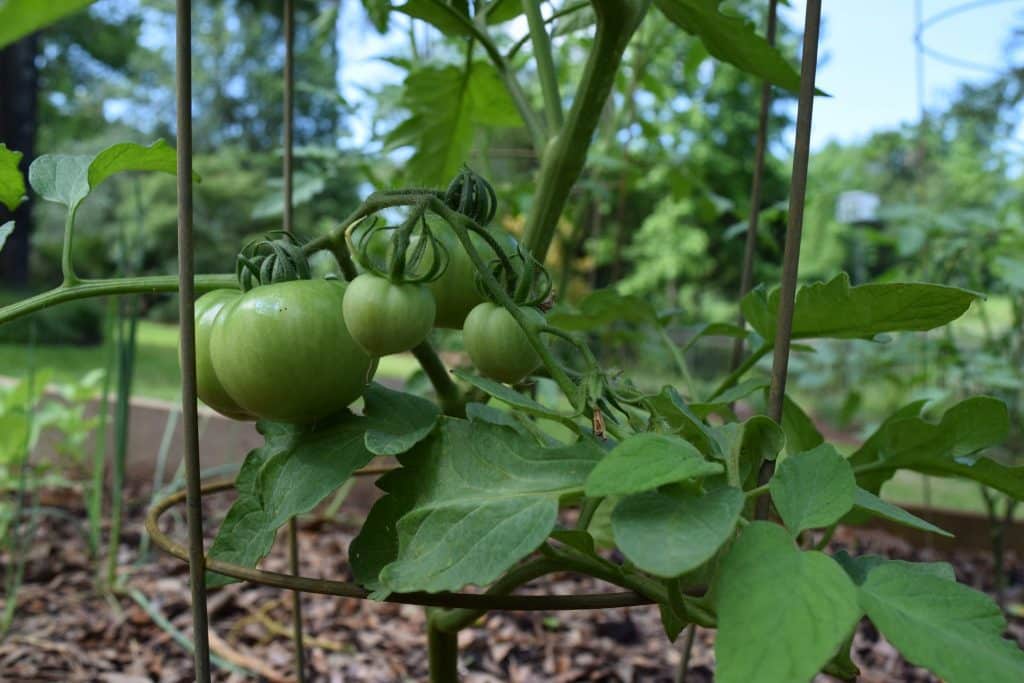
Fall
In the fall, as temperatures start to drop, you can once again plant cool-weather crops. Most of the vegetables that do well in spring can be planted again in the fall, including leafy greens like spinach, lettuce, kale, and Swiss chard. Broccoli, cauliflower, and cabbage are also good choices for a fall crop. Root vegetables like radishes, turnips, and beets can be planted again, and they often have a sweeter flavor when harvested in cooler weather.
Winter
There are still some vegetables that can be grown in raised beds in the winter, though the selection is smaller. Garlic is traditionally planted in late fall to winter for harvest the following summer. If you live in a mild climate, you can continue to grow cool-weather crops like spinach, kale, and other leafy greens throughout the winter. Covering the beds with a cold frame or row cover can extend the growing season and protect the plants from harsh winter conditions.

Remember, the timing for planting these vegetables can vary based on your specific region’s climate and the particular weather each year. Always check the seed packets or plant tags for the best planting times in your area.
Different Styles of Raised Bed Gardens
Raised In-Ground Beds
Raised, in-ground garden beds are simply garden beds with soil added and mounded to make them 6-8 inches higher than the surrounding ground. The benefit of raised ground beds is that they are less expensive, and you are less constrained by walls of other, contained garden beds. The downside is that your plants are more accessible to wildlife and creeping weeds.
Supported Raised Beds
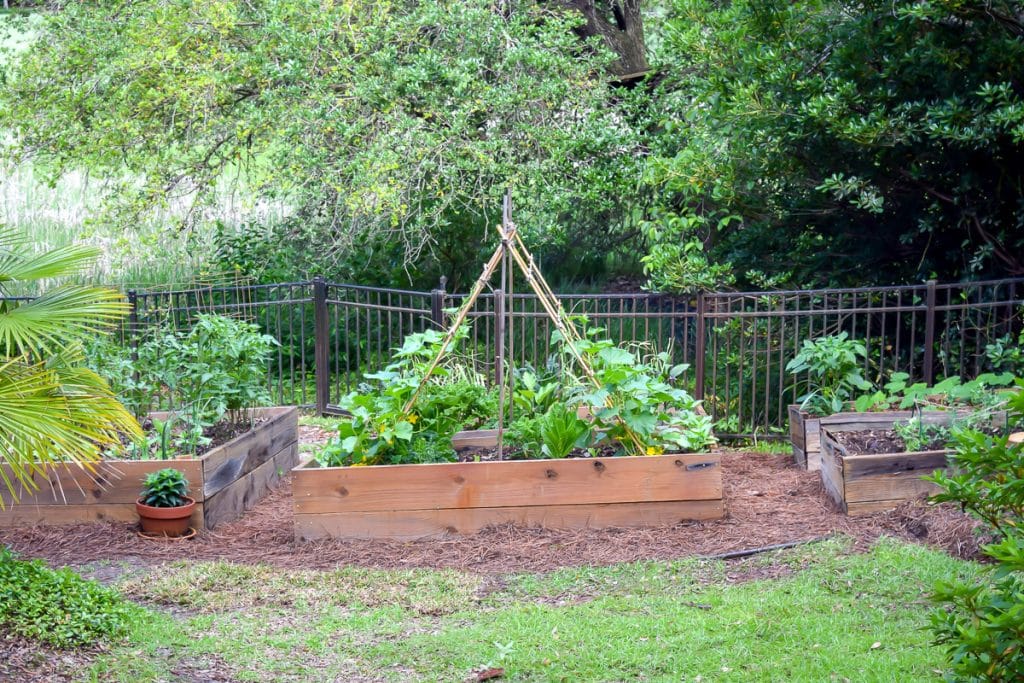
Supported raised beds are mounds of soil surrounded by solid supports or a frame. The material that can be used as supports are varied and are discussed in detail below. These raised beds are useful on the sloped ground as the sides can accommodate differing elevations.
Containerized Raised Beds
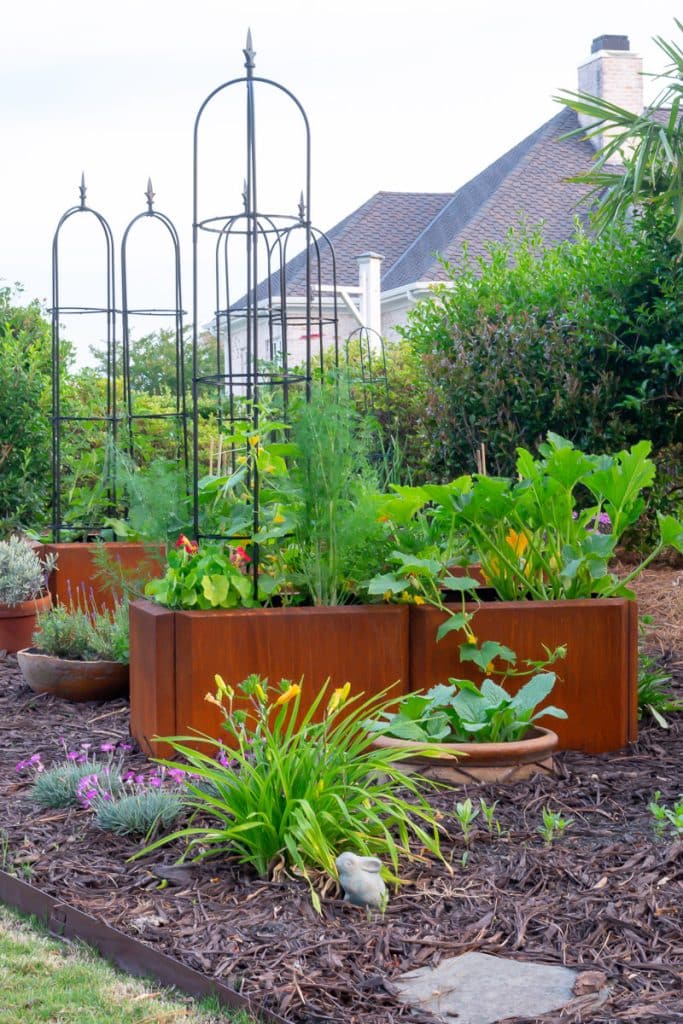
Containerized raised beds are what most gardeners envision when they hear the term ‘raised garden bed.’ They are basically large pots. I consider my Corten steel beds to be containerized raised beds. These beds can be placed just about on any flat surface. If your containerized raised bed has a solid bottom, you may need to drill drainage holes.
Elevated Raised Beds
Elevated raised beds are essentially containerized raised beds that are on legs! They are ideal for gardeners who find it easier to garden standing up!
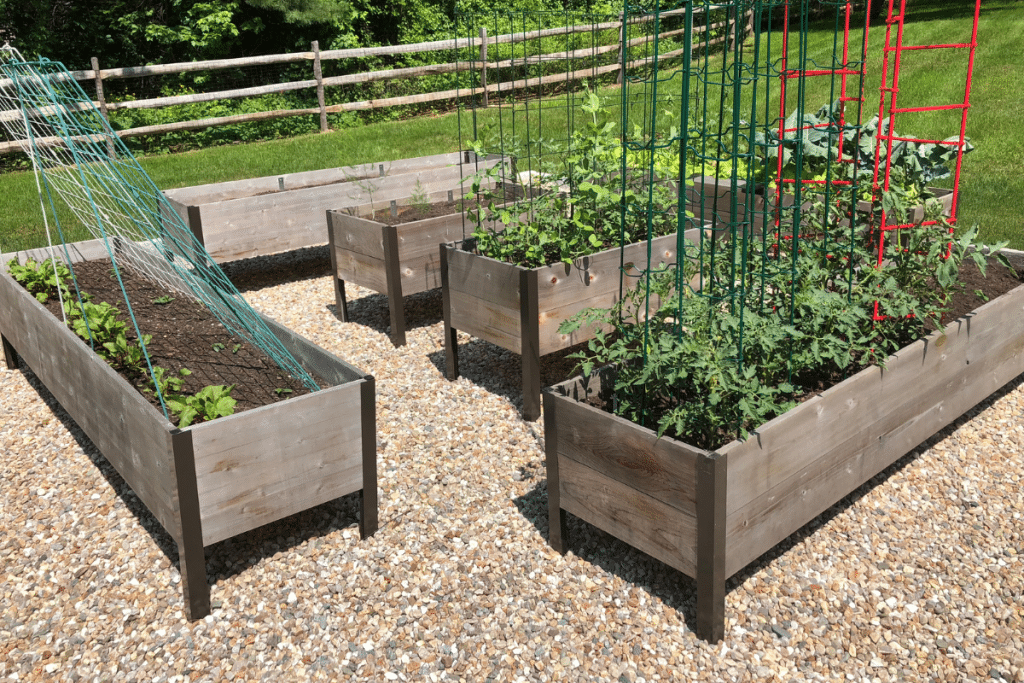
Different Raised Bed Garden Materials
When choosing materials for your raised vegetable garden beds, it’s essential to consider durability, safety, and aesthetics. Here are some of the best materials to use:
Untreated Wood
In our previous home, we built our beds from pine. Because we used untreated wood, they lasted about 4-5 years before they started decomposing. Cedar and redwood are naturally rot-resistant and can last for 8-10. However, these woods are typically twice as expensive as pine.
Avoid using treated lumber if you’re planning to grow edibles, as the chemicals used in the treatment process can leach into the soil and be absorbed by the plants.
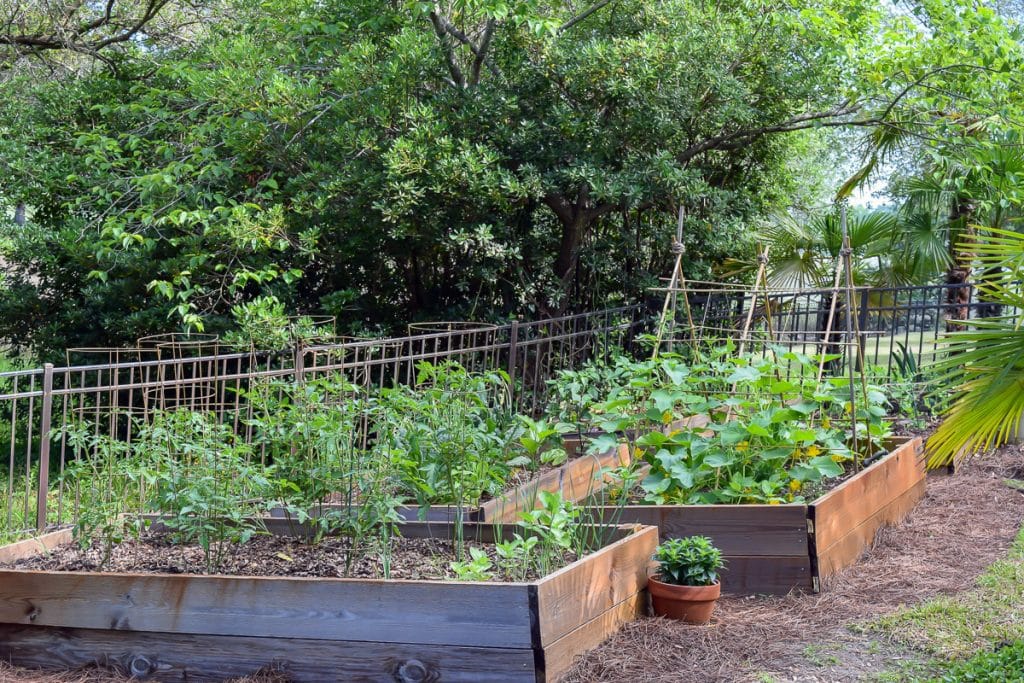
Composite Decking
This material is made from recycled plastic and wood fibers, making it an eco-friendly choice. It’s also durable and requires little maintenance. There are a variety of styles, from more natural to a more cottagey look.
Galvanized Steel, Metal, or Corten Steel
Metal raised beds are durable and offer a modern, industrial look. Ensure the metal is treated so it won’t rust over time. Avoid using old, repurposed metal containers that may have held toxic substances.
There are a couple of options for metal beds; galvanized steel, and Corten are two of them. Galvanized steel has a silver appearance unless coated, and Corten starts as a blue/gray but will eventually oxidize to a rust color. Both of these raised bed styles should last about 50 years and are available in many places. Amazon has both galvanized and Corten, as does Walmart (Corten and galvanized).
We chose these Corten steel raised beds; our backyard is visible from a golf course, so aesthetics were important. I like the way the metal oxidizes and looks more organic.

Cinder Blocks
Cinder blocks are affordable and functional. Paint your cinderblocks to add color to your garden.
Recycled Plastic
Beds made from recycled plastic are becoming more popular. They’re durable, retain heat well, and won’t rot. However, ensure the plastic is food-safe and UV-stabilized to prevent it from breaking down in sunlight.
Natural Stone or Bricks
These materials can be expensive and labor-intensive to install, but they create a beautiful, permanent feature in the garden.
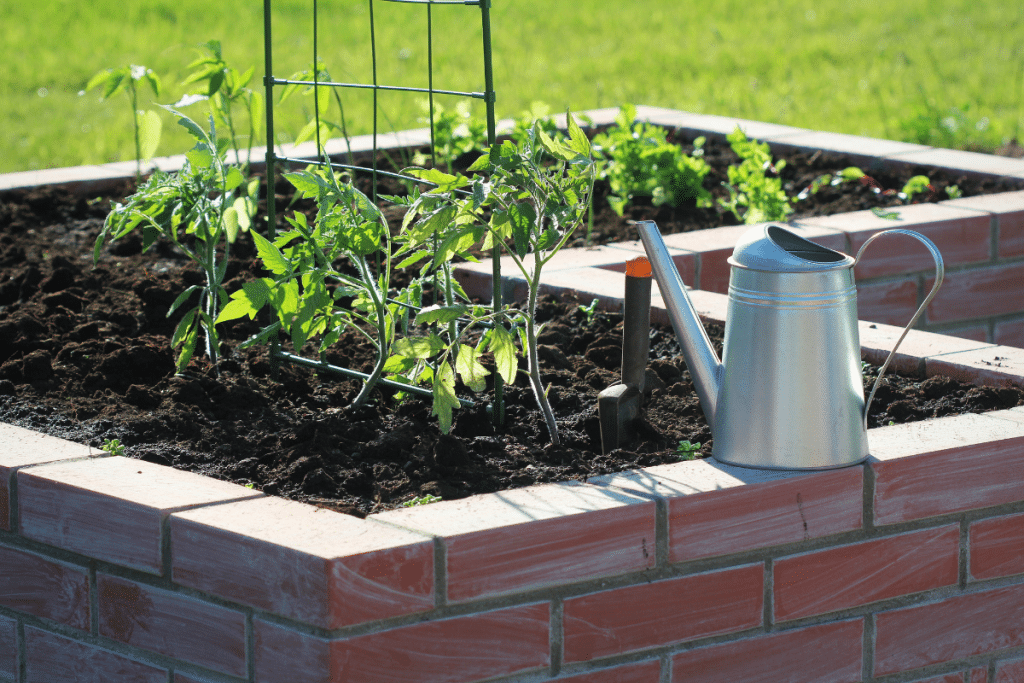
Bamboo
Bamboo is a sustainable and environmentally friendly material that’s strong and durable. However, it may not be as long-lasting as some other options.
Remember, whatever material you choose should fit with your budget, your physical abilities (some materials are heavier or more difficult to work with than others), and your aesthetic preferences. Always ensure the materials are safe for growing food and won’t leach harmful chemicals into your garden soil.
Phew! That was a lot of information! Bonus points if you made it to the end of this post! I sure hope learned something. If you want to refer to this post in the future, bookmark this page or pin the following image.
Thanks so much for spending a few minutes of your busy day with me!
To ensure you don’t miss future content, pop your email in the pale green box on the right or click here. I usually send one email weekly, so I won’t inundate your inbox. I’m sensitive to an overflowing email inbox!
We will only use your email address to send you emails, no more than 1-2 weekly. In addition, you will have access to my growing library of knit & crochet patterns and other printables. Check back often as this library will continue to grow. You can unsubscribe anytime by emailing me or clicking on the “unsubscribe” link at the bottom of all emails.
And you can access many of the products I refer to on my Nourish and Nestle Amazon Page. You can access it here.
So, if you’d like to participate in the ‘subscriber benefit’ action, simply subscribe to Nourish and Nestle here or use the form on the right sidebar. It’s slightly towards the top.
I have sent all my subscribers the link to the Subscriber Benefits Library. If you missed it or misplaced it, let me know.
Until next time…


